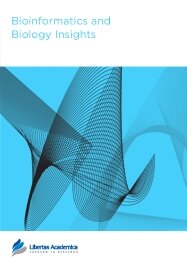

Publication Date: 03 Nov 2008
Journal: Bioinformatics and Biology Insights

AMPA receptors are responsible for fast excitatory transmission in the CNS and the trafficking of these receptors has been implicated in LTP and learning and memory. These receptors reside in the postsynaptic density, a network of proteins that links the receptors to downstream signaling components and to the neuronal cytoskeleton. To determine whether the fruit fl y, Drosophila melanogaster, possesses a similar array of proteins as are found at the mammalian PSD, we identified Drosophila homologs of 95.8% of mammalian PSD proteins. We investigated, for the first time, the role of one of these PSD proteins, Pod1 in GluR cluster formation at the Drosophila neuromuscular junction and found that mutations in pod1 resulted in a specific loss of A-type receptors at the synapse.
PDF (1.85 MB PDF FORMAT)
RIS citation (ENDNOTE, REFERENCE MANAGER, PROCITE, REFWORKS)
Supplementary Files 1 (23.77 KB ZIP FORMAT)
BibTex citation (BIBDESK, LATEX)
XML
PMC HTML
Publishing in Air, Soil and Water and Water Research was the best experience I have had so far in an academic context. The review process was fair, quick and efficient. I congratulate the team at Libertas Academica for a very well managed journal.Magnus Karlsson (IVL Swedish Environmental Research Institute, Stockholm, Sweden) What Your Colleagues Say
Copyright © 2012 Libertas Academica Ltd (except open access articles and accompanying metadata and supplementary files.)
FacebookGoogle+Twitter
PinterestTumblrYouTube